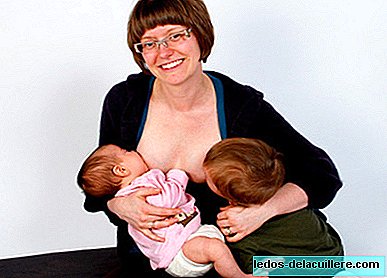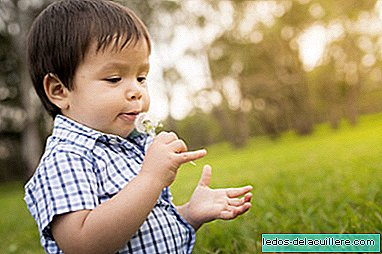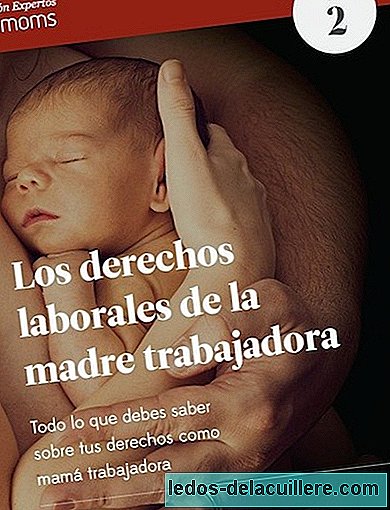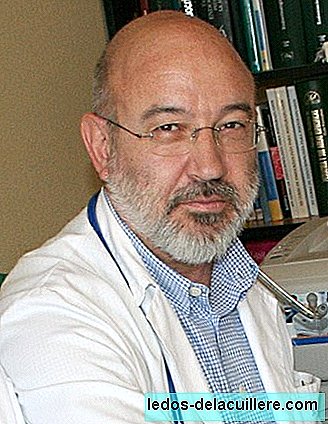
It seems that health professionals and the general population are increasingly clear that breastfeeding while pregnant is not dangerous for the new baby and that is something that many women do without having to recommend weaning for pregnancy.
Now, if the child, if the eldest, is sucking breast milk during pregnancy, something that does not happen in a first pregnancy because there is neither child nor the mother produces milk, What does the mother produce when the second baby is born? Colostrum? And if it produces colostrum, is this the same as that of a mother who does not breastfeed? Is it perhaps a mixture between colostrum and milk? We will try to answer these questions.
Studying mothers who breastfeed in tandem and mothers who do not
To do this, we will focus on a study conducted by Alba Breastfeeding (association of breastfeeding support groups) and by the Department of Nutrition of the Complutense University of Madrid, who analyzed and compared colostrum samples from women who breastfed only one baby and of women who breastfed the baby and another brother.
In total, samples were collected from 25 women. Fifteen who did tandem and ten who did not. From the first milk samples were obtained during pregnancy in the fifth, sixth, seventh, eighth and ninth months. In addition, colostrum samples were collected two and four days, a week, two weeks and a month after giving birth. Of the second, those that only breastfed a baby, samples were collected after delivery as in the first, two and four days, a week, two weeks and a month after giving birth.
To try to achieve conclusive results, samples were compared based on various Immunological and biochemical parameters that are present in both colostrum and mature breast milk, but in very different concentrations. Namely: two cytokines (TGF- -6), immunoglobulins, IgAs and total IgGs, lactose, proteins, fats and vitamin B12.
The lack of budget meant that in the end only samples from the 30th to 35th week of pregnancy of the mothers who were doing tandem, the colostrum could be analyzed two days after giving birth and the mature milk one month after having the baby ( Now, I think like you, a shame because there would be so much information about it ...).
A surprise: mothers who breastfeed their children during pregnancy barely produce milk
The study served, as a bounce, to have more data about something that has been known for a while: mothers who breastfeed their children during pregnancy produce very little milk. In fact, there are those that hardly produce anything. This explains why many children are weaned when their mother becomes pregnant. This explains why my children Jon and Aran weaned towards the three months of the next pregnancy, knowing that "there" nothing left.
As they explain, no mother was able to extract the sample alone, neither manually nor with breast pump. Apparently, with patience, with time, with insistence, they managed to get 5 (measly) milliliters from each chest. Obviously, these mothers then realized that their children were not breastfeeding for a food issue, but for the emotional link, for being a little while with mom.
Comparing colostrum samples
Colostrum samples from the 25 women were the same orange-yellow color typical of colostrum. The milk collected during pregnancy, on the other hand, was white. This means that it could be from childbirth when the woman's body begins to think about the baby, adding the typical colostrum substances that give it density and that specific color.
When analyzing all the samples to look for differences, they observed that, despite having individual differences in all the samples, the means of all the parameters were very similar in the 25 colostrum samples, without statistically significant differences between them: TGF- 300 ng / ml; IgA: ~ 40 mg / ml; IgG: ~ 0.6 mg / ml; lactose: ~ 4.7 g / 100 ml; proteins: ~ 2.3 g / 100 ml; fats: ~ 2.7 g / 100 ml; Vitamin B12: ~ 250 mcg / 100 ml. Below you can see these values compared in a graph:

Analyzing the samples of mature milk obtained after births (and also those obtained during pregnancy), they observed that there were no statistically significant differences in the composition: (TGF-proteins: ~ 0.9 g / 100 ml; fats: ~ 4.5 g / 100 ml; vitamin B12: ~ 45 mcg / 100 ml).
Yes, they found differences, logically, when they compared colostrum samples with breast milk samples, demonstrating that the milk of a pregnant woman changes at birth to produce colostrum and then changes again, when necessary, to be milk again. , according to the needs of the little brother, and not the older brother.
In the following graph it can be seen that the milk of pregnant women was practically the same as mature milk that appears after delivery, after colostrum and after transitional milk.

It is not clear at what time mature milk changes to become colostrum again, since not all samples of women were analyzed in the ninth month, before giving birth. Apparently yes the samples of three women were studied and, having no data, the researchers explained that, without the baby being born yet, the samples were more similar to colostrum than to mature milk, so it is believed that the change occurs a few days before delivery.
With all the comments I think the questions are answered. Children breastfeed mature milk during pregnancy, although they barely suck at anything (some may take something out, others may not be able to get anything out) and when the baby is about to be born the milk changes to colostrum, giving him what he needs at all times. A colostrum with the same properties as that of other women, which will become transitional milk and then mature milk, also with the same properties as any mother's milk, breastfeeding an older child or not.












